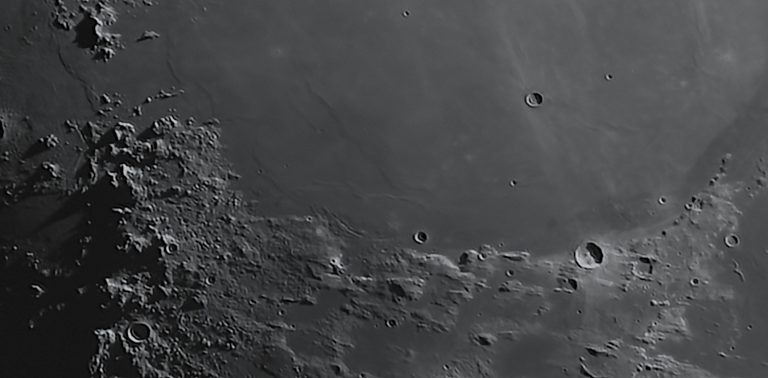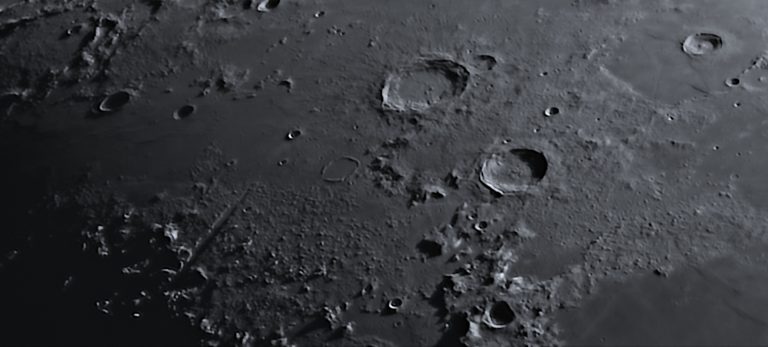For the full picture I stacked 15% of frames acquired during 60 s @ 132 FPS and native focal length. Stacking in Autostakkert and wavelet sharpening in Registax. Mosaic of three frames stitched in ICE. Videos acquired around 22:00 – 22:45 which in my case means more or less full daylight. Seeing as I was able to judge it was rather poor. Altitude of the moon approximately 14 degrees above the horizon. For the Theophilus crater image I used a Celestron 3x barlow lens and stacked 10% of frames.

Craters Theophilus, Cyrillus and Catharina. Stacked 10% of 60 s @ 135 FPS. Celestron 3x Barlow.

Mare Serenitatis, mountain ranges and small crater Linné
This image contains Mare Serenitatis, and the mountain ranges Montes Caucasus and Montes Appeninus. However, my goal with the image was to see if I could detect the very small crater Linné. This crater is known as a difficult object and has been the source of controversy during the pre-photographic era of the 19th century. It was somtimes seen changing shape and size and was sometimes considered as an indication of geological activity on the moon. It is just barely detectable on my image to the right of the opening in the mountian range.. The Virtual Moon Atlas states the apparent size of the object to be 1.1″.

Vallis Alpes (valley in lower left), craters Aristoteles and Eudoxus. Stacked 20% of 60 s @ 135 FPS. Celestron 3x Barlow. Taken 230625.
